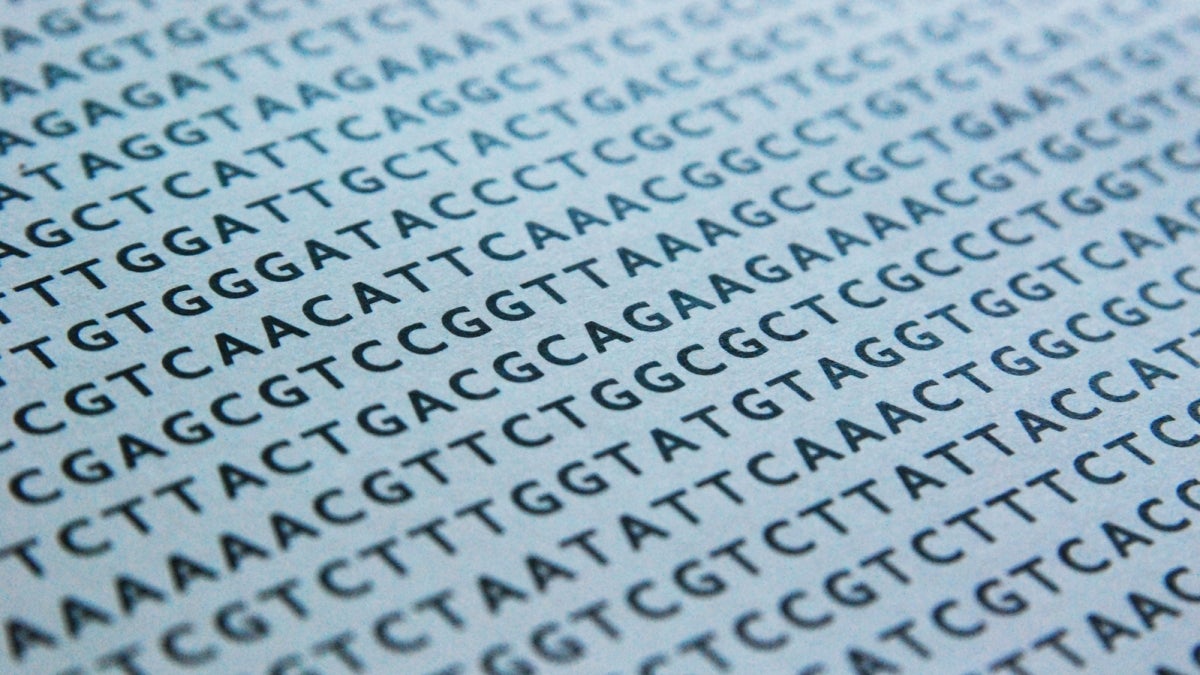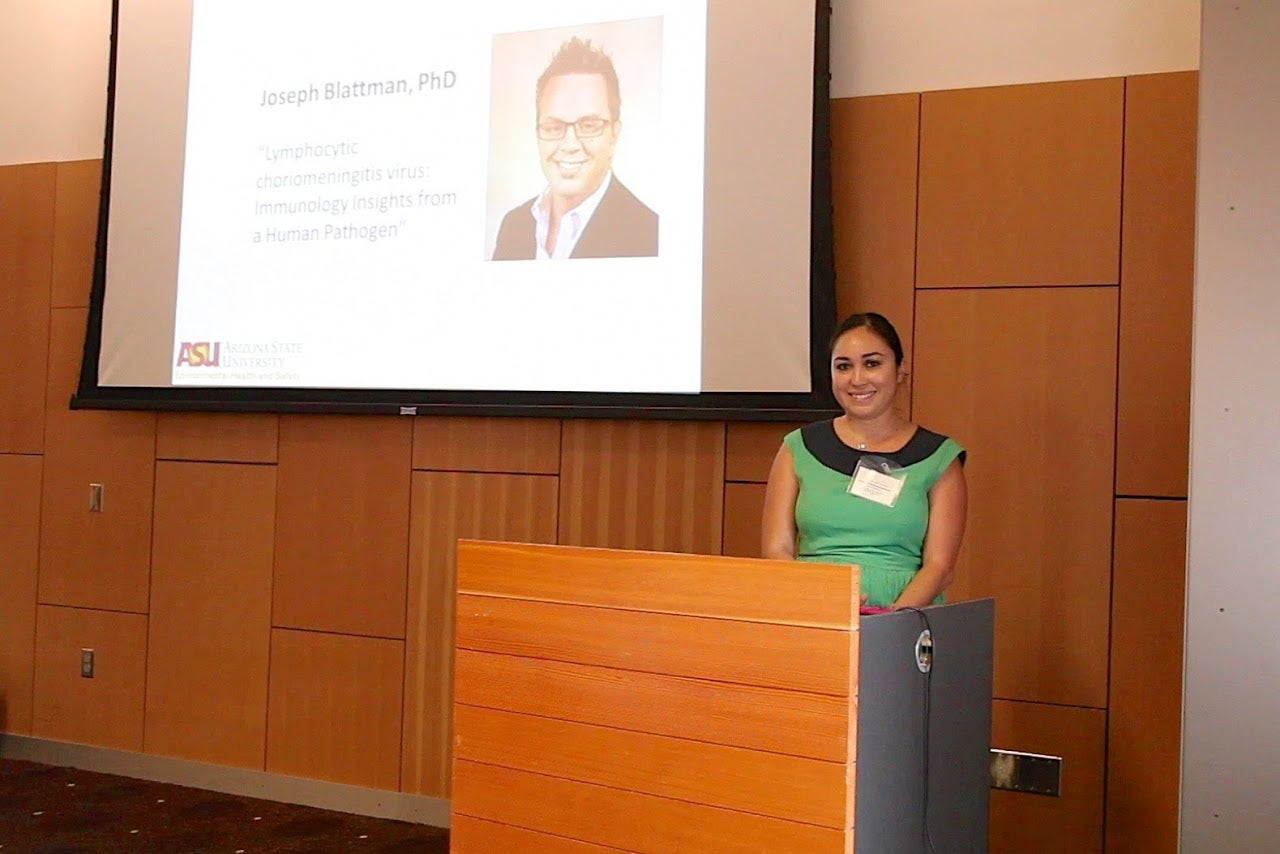Never in the history of human existence has the opportunity to genetically modify or protect life been as great and accessible to anyone interested in the topic as it is today.
Cures for human hereditary diseases. Designer babies. Glow-in-the-dark fish. Bioterrorism. Mosquitoes programmed to perish. The opportunities and risks are here now, but lagging are policies, ethical considerations and safety precautions needed to proceed prudently on an international scale.
Arizona State University experts will delve into the issues presented by biotechnology during the annual International Biosafety and Biosecurity Symposium (SIBB) held this year in Morelia, Mexico, and organized by the Asociación Mexicana de Bioseguridad (AMEXBIO), June 7–10.
“We’re enhancing biosafety and biosecurity across international borders,” said Irene Mendoza, associate biosafety officer with ASU’s Office of Environmental Health and Safety, who will be one of the featured speakers at the symposium. “Anything that affects Mexico, like the release of a pathogenic agent, can travel north and affect us.”
Although infectious diseases will be addressed at the symposium, the ASU delegation will lead a technical discussion on gene editing and gene drive technologies, said David Gillum, ASU Environmental Health and Safety associate director and institutional biosafety officer. In simplest terms, it’s about the ability to modify plants or mammals by manipulating their genome — i.e., the chromosomes in each cell of an organism.
“These technologies can drive a change in an entire species from just one modification,” Gillum said. “It can be propagated in all future generations.”
David Gillum, ASU Environmental Health and Safety associate director and institutional biosafety officer, said that with the increased use of CRISPR Cas9 gene editing technology in Mexico comes great opportunities for ASU to form a more strategic partnership with AMEXBIO by conducting training sessions, lab site visits, joint research and other symposia. Photo by Charlie Leight/ASU Now
The gene drive of mosquitoes, for example, can be modified so the specific types that carry malaria and Zika will not reproduce and eventually die off. But once their genome is changed and released into the environment, there is no easy way to predict any unintended consequences.
“That’s what is scary about it,” Gillum said. “There’s no easy undo button.”
The leading gene editing method capable of making such changes is called CRISPR Cas9. This technological process takes advantage of the immune systems of bacteria to delete nucleic acids in living cells and replace them with the desired nucleic acid to change the genome.
“When you’re doing this genome editing, you’re looking for very specific nucleic acids to change,” Gillum said. “Let’s consider that you have sickle cell anemia and you have one gene that is wrong, and you just want to target that one gene. But the genome is huge; there are billions of base pairs. So how do you make sure that you target the one that you’re looking for and not similar sequences somewhere else in your body?”
Unlike past costly and complex genome editing technologies, CRISPR Cas9 is simpler, relatively inexpensive and thus more accessible to people who may not be working in a modern laboratory with established biosafety policies and procedures.
“There are a lot of citizen labs all over the place where science enthusiasts are getting together in their garages and experimenting,” Mendoza said. “The risk is that although they may just be trying to do something fun, what they create may have unintended consequences.”
Irene Mendoza, associate biosafety officer with ASU’s Office of Environmental Health and Safety, will be one of the featured speakers during the annual International Biosafety and Biosecurity Symposium held this week in Morelia, Mexico, and organized by the Asociación Mexicana de Bioseguridad.
The use of CRISPR Cas9 has increased in Mexico in the past few years, Gillum said. Experts there recognize the challenge, and that drives such events as the SIBB, which includes participation from other Latin American countries.
“What we want to achieve in SIBB is to continue the academic efforts of diffusing specific knowledge on biosafety and biosecurity, as well as raise awareness among those involved in manipulating biological agents,” said Luis Alberto Ochoa Carrera, AMEXBIO president and founder. “The importance of the work of AMEXBIO is based on the need to create a ‘biosafety culture’ and ‘appropriate communication’ within institutions to mitigate risks associated with experimenting with biological agents.”
ASU contacts AMEXBIO remotely throughout the year, but opportunities exist to engage in person and at a higher level by way of training sessions, site visits, joint research and other symposia to address the wide array of biosafety and biosecurity aspects.
“There is a huge opportunity here for ASU and AMEXBIO in Mexico to partner on these projects,“ Gillum said. “They’re very interested in biodefense. We’re looking into philanthropy to help with funding that will allow us to form a more strategic partnership.”
With funding, ASU biosafety experts like Gillum and his team can work with AMEXBIO to visit labs in Mexico to observe operations and offer suggestions on improving safety and security.
“The interesting aspect of biosafety is that in general it’s based on best management practices,” Gillum said. “Except for very highly pathogenic agents and toxins, everything else is done with a best management practices point of view. There’s not always a black-and-white way to do certain things.”
Forming strategic links between biosafety and biosecurity experts across the border enables mutual collaboration and training in the region, Ochoa Carrera said.
“AMEXBIO recognizes ASU’s efforts and transcendence in Mexico and within the international biosafety community,” Ochoa Carrera said. “The ASU and AMEXBIO alliance enables the dissemination of knowledge in this field, and it’s also an area of opportunity between Mexico and the United States.”
Top photo: DNA sequence, courtesy freeimages.com.
More Science and technology

What does a spacecraft, a skeleton and an asteroid have in common? This ASU professor
NASA’s Lucy spacecraft will probe an asteroid as it flys by it on Sunday — one with a connection to the mission name.The asteroid is named Donaldjohanson, after Donald Johanson, who founded Arizona…

Hack like you 'meme' it
What do pepperoni pizza, cat memes and an online dojo have in common?It turns out, these are all essential elements of a great cybersecurity hacking competition.And experts at Arizona State…

ASU professor breeds new tomato variety, the 'Desert Dew'
In an era defined by climate volatility and resource scarcity, researchers are developing crops that can survive — and thrive — under pressure.One such innovation is the newly released tomato variety…




